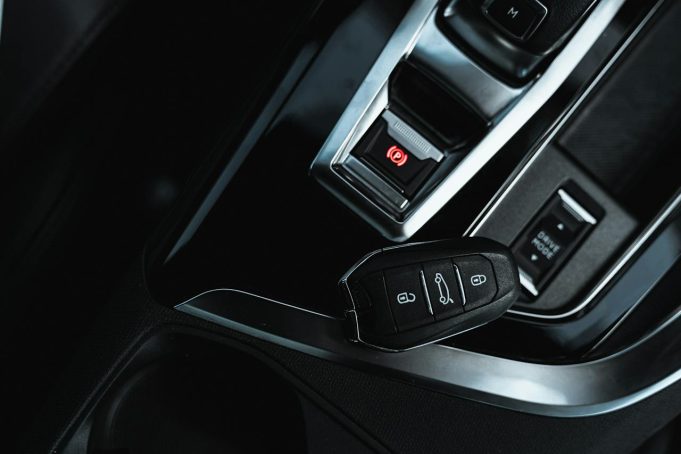In today’s modern world, convenience is king, which extends to our vehicles. Gone are the days of manually inserting a key into a car door and struggling to unlock it. Thanks to key fobs, our cars respond with a simple button push. These tiny electronic wonders have become an integral part of our daily lives, offering not only ease of access but also enhanced car security. However, key fobs are not immune to wear and tear like all electronic devices. In this article, we’ll explore the signs that indicate your key fob might need replacement, ensuring your continued convenience and car security.
Sign 1: Weak or Inconsistent Signal
Weak or inconsistent signal strength can be one of the earliest signs that your key fob is in trouble. When you press the button on your key fob, you expect an immediate response, allowing you to lock or unlock your vehicle effortlessly. However, if you notice that the key fob’s signal is becoming weaker or less consistent, it could be a sign that something is amiss.
Weak signals can manifest in various ways. You might need to stand closer to your car for the key fob to work, or you may experience occasional failures in communication between your key fob and the vehicle. These issues can be particularly frustrating, especially when you’re in a hurry or dealing with adverse weather conditions.
There are several potential reasons for weak or inconsistent signals:
- Battery Depletion: Over time, the battery inside your key fob may lose power, causing a decrease in signal strength. Replacing the battery is a straightforward solution.
- Interference: Electronic interference from nearby devices or structures can disrupt the signal between your key fob and car. Moving to a different location or adjusting your approach angle may help in such cases.
- Faulty Components: The key fob may have malfunctioning internal components, hindering signal transmission. In this case, replacement may be necessary.
If you notice a decline in signal strength, it’s essential to address it promptly to prevent further inconveniences. Start by checking and replacing the key fob battery if needed. If the problem persists, consider consulting a locksmith or automotive expert for a more in-depth assessment.
Sign 2: Unresponsive Buttons
Another sign that your key fob might be on the brink of retirement is unresponsive buttons. Your key fob’s buttons are your gateway to controlling various vehicle functions remotely, such as locking and unlocking doors, popping the trunk, or activating the panic alarm. When these buttons stop responding as they should, it can disrupt your daily routine and potentially compromise your car’s security.
Unresponsive buttons can manifest in different ways. You might need to press the buttons multiple times, apply excessive force, or use your backup key to access your vehicle. These issues can be frustrating and may leave you wondering if there’s a way to restore your key fob’s functionality.
To address unresponsive buttons:
- Testing: Begin by testing each button on the key fob to identify which ones are unresponsive. This can help pinpoint the specific issue.
- Battery Replacement: Unresponsive buttons may sometimes be due to a weak or failing battery. Replacing the battery is an easy and cost-effective solution.
- Cleaning: Over time, dirt, debris, or residue from spills can accumulate around the buttons, affecting their responsiveness. Gently clean the key fob’s surface and buttons to remove any obstructions.
- Button Repair: If cleaning and battery replacement don’t resolve the issue, you may need professional button repair or key fob replacement.
Remember that the responsiveness of your key fob’s buttons is vital for your convenience and safety. If you cannot troubleshoot the problem, you should seek expert assistance from an automotive locksmith or dealership.
Sign 3: Key Fob Battery Drains Quickly
A rapidly draining key fob battery is another common issue that can signal the need for replacement. Key fobs use batteries to power their electronic components and transmit signals to your vehicle. When the battery’s lifespan significantly shortens, it can lead to frequent replacements, inconvenience, and potential lockout situations.
A healthy fob battery should last for an extended period, often several years, before needing replacement. If you replace the battery more frequently than expected, it’s time to investigate the cause and implement a solution.
To address a quickly draining key fob battery:
- Battery Type: Ensure you’re using the correct type of battery recommended for your key fob. Consult your vehicle’s manual or a dealership for the right battery specifications.
- Quality Batteries: Invest in high-quality batteries from reputable brands to ensure longevity.
- Battery Replacement: Follow the manufacturer’s instructions for safely replacing the key fob battery. Use a fresh, high-quality battery.
- Battery Contacts: Inspect the battery contacts within the key fob for corrosion or damage. Clean them if necessary.
- Avoid Continuous Button Pressing: Avoid holding down the buttons on your key fob for extended periods, which can drain the battery more quickly.
If the problem persists despite following these steps, it may indicate an underlying issue with the key fob, such as internal electrical problems. Consulting a locksmith or dealership for further diagnosis and potential replacement is advisable in such cases.
Sign 4: Physical Damage to the Key Fob
Physical damage to your key fob indicates that it may require replacement. Key fobs are not indestructible and can suffer from cracks, breaks, or water damage when subjected to rough handling or accidents. Even minor damage to the key fob’s casing or internal components can impact its operation and longevity.
Physical damage can affect various aspects of your key fob’s functionality:
- Casing Damage: Cracked or broken casing can expose the internal electronics to moisture, dust, and debris, potentially leading to malfunctions.
- Button Damage: Physical impact can damage the buttons, making them less responsive or non-functional.
- Water Damage: Submerging your key fob in water or exposing it to moisture can lead to corrosion and electrical issues.
Addressing physical damage to your key fob:
- Assessment: Inspect your key fob for visible damage, including cracks, dents, or water ingress.
- Repair: Minor damage may be repairable by replacing the casing, buttons, or other components. Consult a professional locksmith or automotive expert for repair options.
- Replacement: Extensive damage or water exposure may necessitate key fob replacement to ensure reliable performance.
Preventing physical damage to your key fob involves careful handling and storage. Avoid exposing it to extreme temperatures, moisture, or impacts, and consider using protective cases or covers.
Sign 5: Key Fob No Longer Communicates with Vehicle
One of the most concerning signs that your key fob needs replacement is when it no longer communicates with your vehicle. Key fobs rely on electronic communication to perform functions such as unlocking doors and starting the engine. If this communication breaks down, you may be locked out of your car or unable to use essential features.
There are a few factors that can lead to a loss of communication between the key fob and your vehicle:
- Programming Issues: Incorrect key fob programming or synchronisation problems can disrupt communication. Re-establishing the connection may require reprogramming.
- Compatibility Problems: Incompatibility between the key fob and the vehicle’s electronics can prevent communication. Ensuring that you have the correct key fob model is essential.
- Internal Failures: Internal electronic failures within the key fob can hinder its ability to communicate with the vehicle. Replacement may be the only solution.
To address a key fob that no longer communicates with your vehicle:
- Check Programming: Consult your vehicle’s manual or contact a dealership to ensure the key fob is correctly programmed.
- Battery Status: Verify that the key fob is functioning, as a dead battery can disrupt communication.
- Reprogramming: Attempt to reprogram the key fob according to the manufacturer’s instructions.
- Professional Assistance: If communication issues persist, seek assistance from an automotive locksmith or dealership for diagnosis and potential replacement.
Maintaining proper communication between your key fob and your vehicle is crucial for the reliable operation of remote functions. Promptly addressing communication issues can help prevent lockouts and ensure peace of mind.
Conclusion
Key fobs have revolutionised how we interact with our vehicles, offering convenience, security, and peace of mind. However, when these essential devices start showing signs of wear and tear, it’s crucial to recognise the indicators that signal the need for replacement. From weak signals to unresponsive buttons, rapidly draining batteries, physical damage, and lost communication, these signs are early warnings that your key fob may be nearing the end of its service life.
Regular maintenance, responsible handling, and prompt replacement when necessary are vital to ensuring your key fob’s continued functionality and reliability. In cases where replacement becomes inevitable, consulting with a reputable locksmith or dealership can help you find the right replacement key fob for your vehicle, restoring your convenience and car security.
Remember, a well-maintained key fob is your passport to a seamless driving experience, so stay vigilant and address any signs of trouble promptly to enjoy hassle-free journeys.














